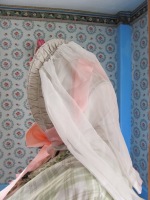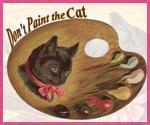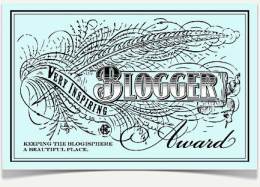I am reposting favorite helpful posts each Monday throughout March, April, and May. This post will wrap-up this series. Starting in June, I will share posts focusing on the the questions I am asked most often when Intepreting.
This look at veils concentrates on the everyday veils of the mid-19th century, the 1840s through 1860s. It does not include mourning veils.
As some of you know, I have issues with sunlight that can trigger migraines or full-body crashes. So, veils are very important to me. This is very much a “don’t leave home without it” item.
You will notice each of the veils I wear are silk gauze. This is for two reasons. First, when we started exploring veils locally, some years ago, the silk gauze at Dharma was what we felt suitable. Our research has expanded. Second, personally, I find the gauze helps with my light issues nicely. I am kinda afraid to make the change to net. But, I will be giving net a try when I find a net that I feel mimics the feel of those originals I’ve held.
Veil Shapes

The most common shapes for veils included the wide rectangle and the semi-circle. In each shape, they tended to be wider than they are long, ranging approx from 30″to 40″ wide and 15 ” to 20″ long based on those I’ve been able to see in photos and in person.

Right above: A rectangular net veil, approx 36″ wide by 17″ deep. Right below: A semi-circular veil. I need to double check the dimensions, as I am pretty sure I bought this one but haven’t a clue where I put it.
There were some variations to these shapes. This example at the MET may be mid-century. It is a variation on a rectangle with the top and bottom edges curving. There is a shape I would call a petal, with two sides each an arc. At the bottom of the page, you will see a quasi-triangle shaped veil meant for windy weather.
Be sure to browse your favorite and local museums to see original veils.
Veil Materials

Let me first say I am utterly clueless about lace, or at least entirely lacking confidence in my knowledge of lace. I will leave the details of which lace is which and which is correct to those who have studied lace in depth.
That said. In minimum:
In terms of fibers, silk, linen, wool and cotton all come up for nineteenth century shawls in museum collections.
When looking at the net ground of net or net lace, you want little hexagons. You do not want the little rectangles or diamonds.

Veil Colors

The most commonly found veil colors for the century are black, white and ivory. We can also find blues and greens. These do tend to appear more frequently in earlier remaining veils then in those of the 40s, 50s and 60s.
To the left is an image of me in an 1820s bonnet with a green veil. This is a dyed silk gauze veil made by Bevin Lynn. I found this green to be gentle on the eyes when out in the sun, given moderate protection. It did not give glare as some white veils can do. It did play with the light giving a streaked color effect similar to what some migraines can produce.
I have also worn white and black veils. I find black silk gauze to give the most protection from the sun. It also gives the most vision dampening of the colors I’ve worn. White give some light protection. I prefer it on moderately sunny day for short walks across the tree filled square.
Attaching a Veil

This is how I attach my veil. Original veils show either a channel at the top of the veil or worked holes, through which a thin cord or ribbon can be drawn. In my veils, I prefer to put a small knot or loop in the end. This helps keep the cord from sliding back through and makes it easy to grab.

Once this cord/ribbon is drawn up, the veil can be positioned along the brim edge. I drape the veil over the back of the bonnet.
I prefer to pin just back from the edge. With my drawn bonnet, seen here, I pin under the second cane. On my straw bonnets, I pin a row behind the fancy plait or about the 3rd row back. The end pins are pinned upward sorta following the row of cane or plait. In the center top, I pin one or two pins across the veil, trying to catch the cord,
parallel to the cane or plait. (pinning perpendicular to the plait will allow the veil to pull forward or backward as it drapes.) Here you can see how this veil drapes forward and back. This is a silk gauze veil made for me by Bevin. It is trimmed in silk ribbon. It is a little longer than most 1860s veils. Some 1850s images do show a similar length.
Here Betsy Connolly is wearing a semi-circular veil. Notice how she doesn’t have the ends pooling on either side as a rectangular veil would.

Specialty Veils

Note for the repost: This is one of those posts I intended to get back to and provide additional information on but didn’t because life happens. I do hope to do another post about veils addressing several questions and details. Hopefully soon.










Leave a comment